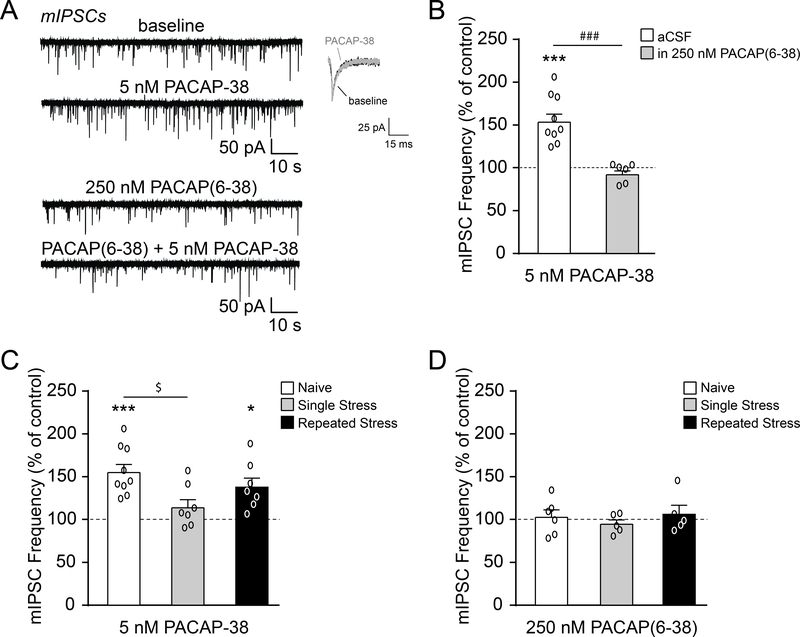Figure 5.
PACAP acts on PAC1 receptors localized to presynaptic terminals of CeM GABA synapses. A. Representative mIPSC traces and scaled averages from naïve rat CeM neurons at baseline and during superfusion of PACAP-38 (5 nM), PAC1 antagonist (250 nM PACAP(6–38)), and PACAP(6–38)+PACAP-38. B. PACAP-38 significantly increased the mean mIPSC frequency in naïve rats, and pretreatment with PACAP(6–38) prevented this facilitation (6–9 cells from 4–6 rats per group). C. PACAP-38-induced facilitation of the mIPSC frequency was lost after a single restraint stress, but recovered toward naïve levels with repeated stress restraint sessions (7–9 cells from 5–6 rats per group). The data from naïve rats shown here are the same as in Fig. 5B. D. PACAP(6–38) had no effect on mIPSC frequencies in naïve rats and rats subjected to single or repeated restraint stress sessions (5–6 cells from 3–4 rats per group). All data are presented as mean±SEM. *p<0.05 and ***p<0.001 by one sample t-test; ###p<0.001 by unpaired t-test; $p<0.05 by one-way ANOVA with post hoc Tukey’s multiple comparisons test.

